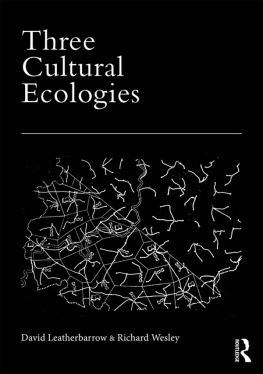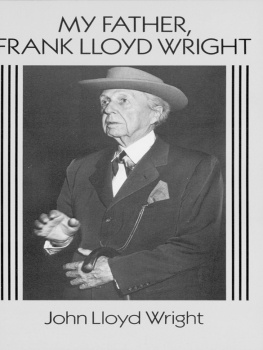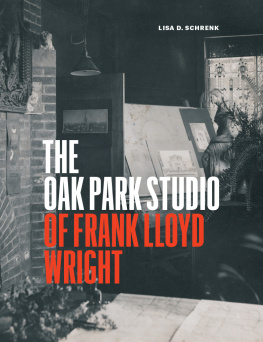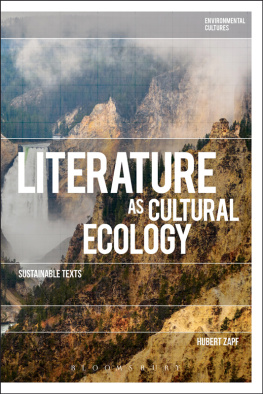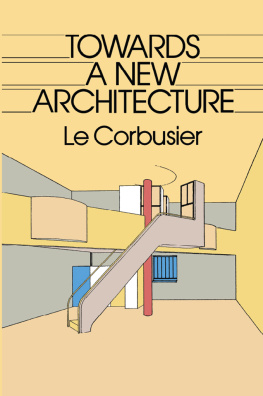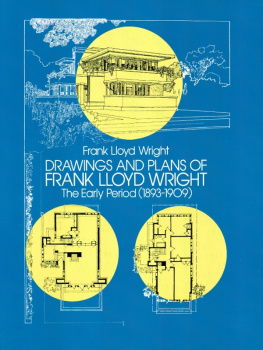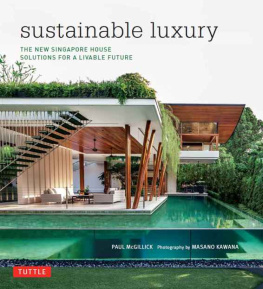Three Cultural Ecologies
Three Cultural Ecologies reverses common conceptions of modern architecture. It reveals how selected works of two modern architects, Le Corbusier and Frank Lloyd Wright, embraced environmental and cultural conditions as reciprocal and complementary. A basic premise of this books arguments is that cultural patterns cannot be adequately conceptualized in the terms that typically define ecology today. Instead, studies based on the natural sciences must be complemented by descriptions and interpretations of historical narratives, cultural norms, and individual expressions. Previously unpublished images and new interpretations will allow readers to rediscover works they thought they knew; Villa Savoye, Taliesin, La Tourette, and Ocatilla; as well as projects that are less well known: by Wright, the House on the Mesa and the City Residential Plan, and by Le Corbusier, the Immeuble-villas and Ilt Insalubre projects. More broadly, this study of cultural ecology at three scales domestic, monastic, and urban reconsiders the history of modern architecture. The conditions brought about by societal and technological modernization and confronted by modern architecture have not disappeared in our time, but have intensified, making the task of imagining how some measure of equilibrium between culture and ecology might be achieved even more pressing.
David Leatherbarrow is Professor of Architecture, University of Pennsylvania, where he serves as Chairman of the Graduate Group in Architecture (Ph.D. Program). He teaches architectural design as well as the history and theory of architecture, gardens, and cities. His recent books include Architecture Oriented Otherwise, Topographical Stories: studies in landscape and architecture, and Uncommon Ground: architecture, technology and topography.
Richard Wesley is Adjunct Professor of Architecture, University of Pennsylvania, where he serves as Undergraduate Chair in the Department of Architecture and teaches architectural design and theory. He has previously taught at the University of Illinois, University of Notre Dame, and Harvard University. His essays and reviews have been published in Architectural Research Quarterly, Critical Juncture, Harvard Design Magazine, Journal of the Society of Architectural Historians, Rassagna, Res, and VIA.
Three Cultural Ecologies
David Leatherbarrow and Richard Wesley

First published 2018
by Routledge
2 Park Square, Milton Park, Abingdon, Oxon OX14 4RN
and by Routledge
711 Third Avenue, New York, NY 10017
Routledge is an imprint of the Taylor & Francis Group, an informa business
2018 David Leatherbarrow and Richard Wesley
The right of David Leatherbarrow and Richard Wesley to be identified as authors of this work has been asserted by them in accordance with sections 77 and 78 of the Copyright, Designs and Patents Act 1988.
All rights reserved. No part of this book may be reprinted or reproduced or utilized in any form or by any electronic, mechanical, or other means, now known or hereafter invented, including photocopying and recording, or in any information storage or retrieval system, without permission in writing from the publishers.
Trademark notice: Product or corporate names may be trademarks or registered trademarks, and are used only for identification and explanation without intent to infringe.
British Library Cataloguing-in-Publication Data
A catalogue record for this book is available from the British Library
Library of Congress Cataloging-in-Publication Data
Names: Leatherbarrow, David, author. | Wesley, Richard, author.
Title: Three cultural ecologies / David Leatherbarrow & Richard Wesley.
Description: New York : Routledge, 2017. | Includes bibliographical references and index.
Identifiers: LCCN 2017014267 | ISBN 9781472435538 (hardback) | ISBN 9781315595863 (ebook)
Subjects: LCSH: ArchitectureEnvironmental aspects. | Architecture and society. | Le Corbusier, 18871965Criticism and interpretation. | Wright, Frank Lloyd, 18671959Criticism and interpretation.
Classification: LCC NA2542.35 .L43 2017 | DDC 720.1/03dc23
LC record available at https://lccn.loc.gov/2017014267
ISBN: 978-1-4724-3553-8 (hbk)
ISBN: 978-1-315-59586-3 (ebk)
Typeset in Bembo
by Apex CoVantage, LLC
Contents
Architecture as cultural ecology: what might this phrase mean?
It may seem strange to pose this question today, when the words culture and ecology are used so widely and seem so obvious in architecture and other fields. But the answer is far from clear, especially when the two are joined to form a single term.
If it was possible a few decades ago to dismiss the warnings of an impending environmental crisis as alarmist, if faith in evermore effective, technological fixes once allowed architects to believe there would be no need to change the way they practiced design, the situation has changed today; routine methods and indifference have become entirely unacceptable, to clients in many cases and to the public almost always. Persuasive accounts of the ecological crisis and recommendations for alternative design practices come from all quarters: from public policy and governmental regulations, to environmental science, award-winning designs, education reform, and professional licensing requirements.
No less common and insistent are the calls for change from outside architecture. Among the many, perhaps the following lines from Flix Guattaris widely read Three Ecologies can be taken as a representative example:
The Earth is undergoing a period of intense techno-scientific transformation. If no remedy is found, the ecological disequilibrium this has generated will ultimately threaten the continuation of life on the planets surface. Alongside these upheavals, human modes of life, both individual and collective, are progressively deteriorating.
The apocalyptic tone of this forecast has become standard fare, across the philosophical and ideological spectrum. The remedy Guattari seeks will no doubt depend upon the contributions of many, each of us is being called to act, according to whatever means we have at our disposal material, intellectual, or professional. Today, pleas for ecological awareness and green living call for sustainable actions that minimize our use of natural resources and reduce or eliminate damage to the natural environment water, land, and air.
A thinker who may be seen to argue an opposite politics, David Orr, offers exactly the same diagnosis of our predicament:
We can no longer assume that nature will be either bountiful or stable or that the earth will remain hospitable to civilization as we know it three crises [the food crisis, the end of cheap energy, and natural systems at their breaking point] constitute the first planetary crisis, one that will either spur humans to a much higher state or cause our demise . We have a decade or two in which we must make unprecedented changes in the way we relate to each other and to nature.
Orr does not say in this passage that architecture will play a significant role in the unprecedented changes required for the continuance of life as we know it, but this inference is suggested by his allusion to the Earth as an environment made hospitable to human civilization. But the problem is not for Orr essentially political. Making hospitable settings is architectures basic task. The same role for architecture is implied in Guattaris allusion to human modes of life, both individual and collective. Yet surely it would be presumptuous to attribute to architecture a salvational role, on the assumption that better design could bring an end to the environmental crisis. Much of modernist urbanism also assumed this premise. At both scales, inaction is not an option either. Resignation is no better than over-reaching. Nor can we continue to rely on the concepts, techniques, and images that have historically contributed to this state of affairs.

